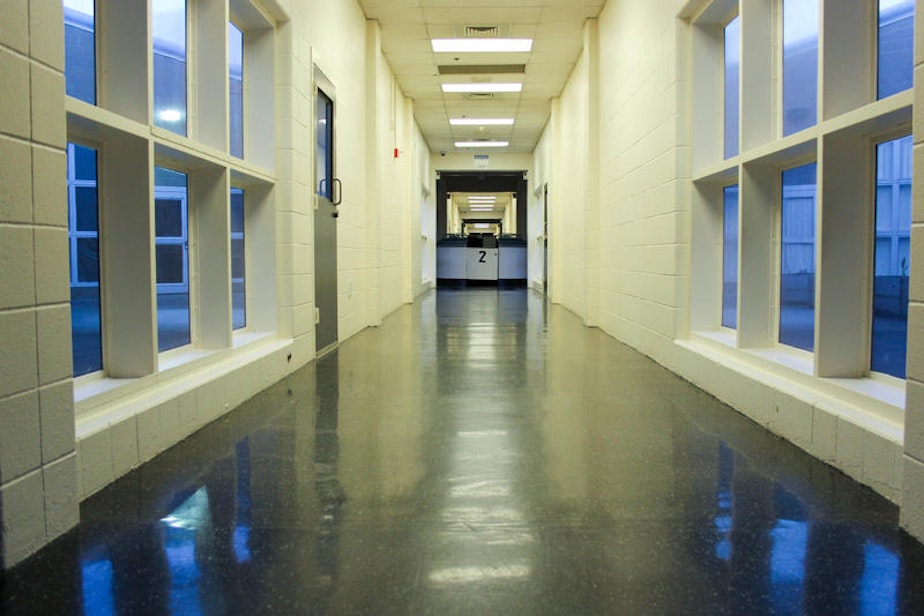Despite good intentions, still no plan for zero youth detention in King County

Zero youth detention.
It's King County's white whale, a promise and a term batted around without much explanation of what it even means.
Last September, King County Executive Dow Constantine received a comprehensive report on the new youth jail being built in Seattle’s Central District. It included detailed recommendations to help the county reach its stated goal of zero youth detention.
Fast-forward nine months. What progress has been made toward that goal?Deputy County Executive Rhonda Berry, who is leading the county’s efforts to reduce youth detention, said she will be presenting a roadmap for change to County Executive Constantine soon. “Along with that will be a set of recommendations. What can we do to make big changes, or make meaningful changes, in the six-month to two-year timeframe?” Berry said.
Some critics say that pace isn’t fast enough, even though the county is jailing fewer kids than ever.
Sponsored
King County Councilmember Rod Dembowski said the county needs a stronger plan for reaching zero youth detention. “I don't think anybody here in King County has the answers or a clear path forward,” Dembowski said.
Part of the problem, he said, is the design of the Children and Family Justice Center – the youth jail. According to Dembowski, the design is outdated and the county knows it – because that was in Trupin’s report.
“If you drive by and look at it, it's an old-fashioned jail built out of cinder blocks with steel doors and very little light,” Dembowski said. “And we know that basically what we're building is a failure factory.”
He has called for a pause on construction but the work moves ahead.
On an average day, there are about 50 young people at the current youth jail on Alder Street. That’s down about 25 percent since 2012.
Sponsored
But it’s still far from zero.
King County Prosecutor Dan Satterberg sees the need for secure detention. But he also thinks more robust, responsive, early interventions could lower some of that need.
“Yes, you have to have a strong police presence. Yes, you have to charge people who have committed serious violent crimes and you have to put them in prison for public safety," Satterberg said.
"But there's a group that hasn't done that yet, but who are on a predictable path of violence. And how do we interrupt that predictable path for a 16 year old boy or a girl who we know is surrounded by violence and is heading that way?"
The building is only part of the equation. To reach its goals, the county is leaning on alternatives to youth detention. Some of the suggested solutions are a tough sell. Many require cooperation among police, prosecutors, the courts and public defenders.
Sponsored
For example, many people believe that community mentors can have a strong positive impact on youth who are considered at-risk. But there isn’t much funding for these kinds of projects.
Recommendations on mentoring were included in that September report, written by Dr. Eric Trupin, a specialist in child and adolescent psychology at the University of Washington.
Trupin said the county often seems unwilling to fund the community groups needed to do the work. “The vast amount of resources go to traditional organizations,” he said. Those organizations may have a difficult time connecting with youth who are wary of official institutions.
But the county did fund a grant for a Seattle nonprofit called Community Passageways, founded by Dominique Davis, a youth mentor and football coach. It connects at-risk, gang-affiliated, or formerly incarcerated youths with resources to keep them out of the prison system.
The group’s mentors have started working with Trupin and his team to develop a research-based approach.
Sponsored
Trupin believes that this mentoring method will be successful. And once the county sees the outcomes, Trupin said, it will be under pressure “to reallocate resources in ways that they haven’t really done.”
That means toward preventative, community-based approaches.
The mentors in the Passageways effort focus on teaching young people how to change their lives to avoid the criminal justice system. In a recent training, mentors learned to use Dialectical Behavior Therapy techniques. One focus of DBT, a type of cognitive behavioral therapy, is helping people to respond more effectively to interpersonal conflict.
The mentors use role-playing to brainstorm different responses to emotionally intense situations. In one scenario, a youth wants to meet up with his friends, but he knows they’ll be carrying guns.
As each of the four mentors discusses how they would advise him, Davis notes he’s already been using these ideas.
Sponsored
“I’ve been doing this without realizing I’ve been doing this,” Davis said. “Like when I tell these guys, ‘Hey, look at your friends and ask yourself, Do you really want to follow them? He’s been to jail three times. He’s been to jail twice. Where are you going to end up?’”
For now – until the county figures out viable alternatives to incarceration – that might still be detention.

